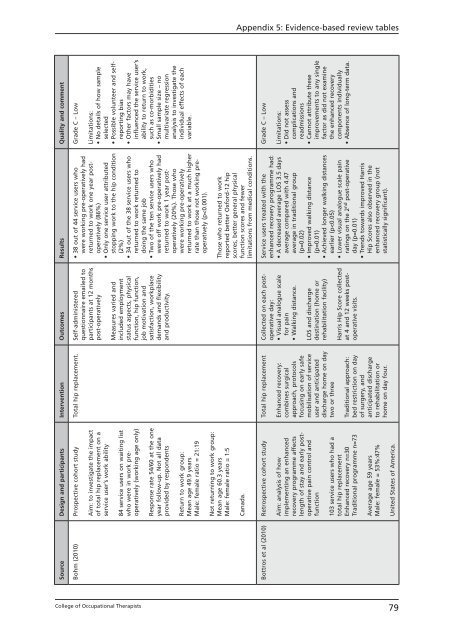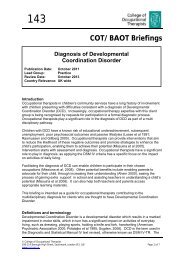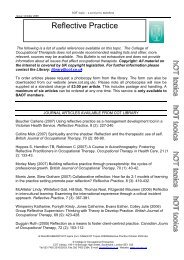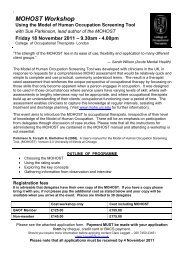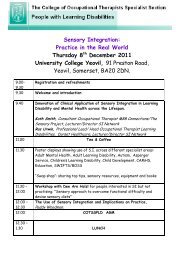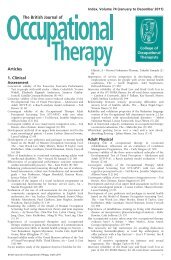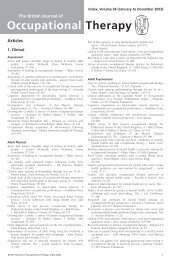Total hip replacement - College of Occupational Therapists
Total hip replacement - College of Occupational Therapists
Total hip replacement - College of Occupational Therapists
You also want an ePaper? Increase the reach of your titles
YUMPU automatically turns print PDFs into web optimized ePapers that Google loves.
Appendix 5: Evidence- based review tables<br />
Source Design and participants Intervention Outcomes Results Quality and comment<br />
Bohm (2010) Prospective cohort study<br />
Aim: to investigate the impact<br />
<strong>of</strong> total <strong>hip</strong> <strong>replacement</strong> on a<br />
service user’s work ability<br />
84 service users on waiting list<br />
who were in work preoperatively<br />
(working age only)<br />
Response rate 54/60 at the one<br />
year follow- up. Not all data<br />
provided by respondents<br />
Return to work group:<br />
Mean age 49.9 years<br />
Male: female ratio = 21:19<br />
Not returning to work group:<br />
Mean age 60.3 years<br />
Male: female ratio = 1:5<br />
Canada.<br />
<strong>Total</strong> <strong>hip</strong> <strong>replacement</strong>. Self- administered<br />
questionnaire emailed to<br />
participants at 12 months<br />
post- operatively<br />
Measures varied and<br />
included employment<br />
status aspects, physical<br />
function, <strong>hip</strong> function,<br />
job motivation and<br />
satisfaction, workplace<br />
demands and flexibility<br />
and productivity.<br />
• 38 out <strong>of</strong> 44 service users who<br />
were working pre- operatively had<br />
returned to work one year postoperatively<br />
(86%)<br />
• Only one service user attributed<br />
stopping work to the <strong>hip</strong> condition<br />
(2%)<br />
• 34 out <strong>of</strong> the 38 service users who<br />
returned to work returned to<br />
doing the same job<br />
• Two <strong>of</strong> the ten service users who<br />
were <strong>of</strong>f work pre- operatively had<br />
returned to work 1 year postoperatively<br />
(20%). Those who<br />
were working pre- operatively<br />
returned to work at a much higher<br />
rate than those not working preoperatively<br />
(p


